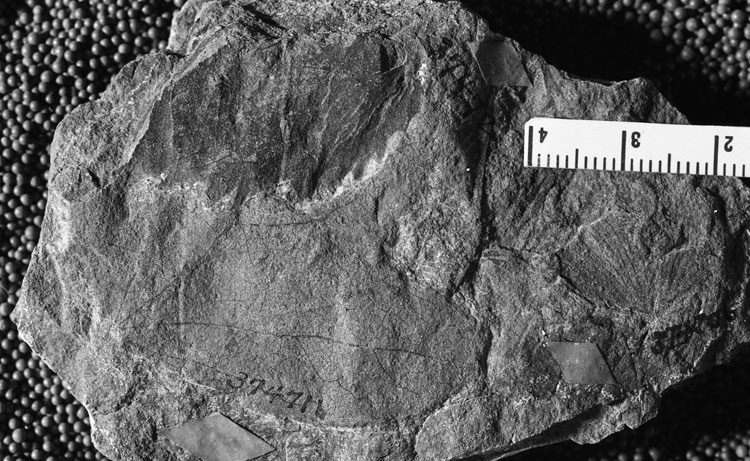Locality
From Hollick (1930) (p. 112)
"Chignik River, just below Long Bay, Alaska Peninsula (original No. 55); collected by W. W. Atwood and H. M. Eakin in 1908 (lot 5297)."
Description
From Hollick (1930) (p. 112)
"Plate 29, Figures 3a, 4a; Plate 82, Figure 4"
"Leaves of medium size, variable in shape, trilobate; lobes rounded, obtuse; middle lobe expanded, broadly undulate; margin entire; base broad and rounded or narrowed to wedge shape; nervation tripalmate from the base; midrib supporting several irregularly disposed, camptodrome secondary nerves above that merge into the tertiary nerves and form a network of polygonal areolae along the margin; lateral primaries craspedodrome to the apices of the lobes, each one connected on its under side with a marginal veinlet by a
series of fine nervillose branches."
Remarks
From Hollick (1930) (p. 112)
"These leaves appear to vary somewhat in form; but the genus to which they apparently belong is notably heterophyllous. The specimen represented by Figure 3a, Plate 29, is apparently much narrower than the other two, but this feature is probably more apparent than real and may be accounted for by the evident distortion of the leaf, as indicated by the wrinkled upper middle portion, which has apparently resulted in more or less lateral constriction. It is with some hesitation that these leaves are referred to the genus Hedera, as they are also suggestive of Passiflora - a genus as heterophyllous as Hedera - but the minor critical characters appear to favor Hedera. They apparently belong to the type of leaf represented by, Hedera malaisai Saporta and Marion (1878) (p. 76, pl. 12, fig. 3) from the "Paleocene" of Belgium."
